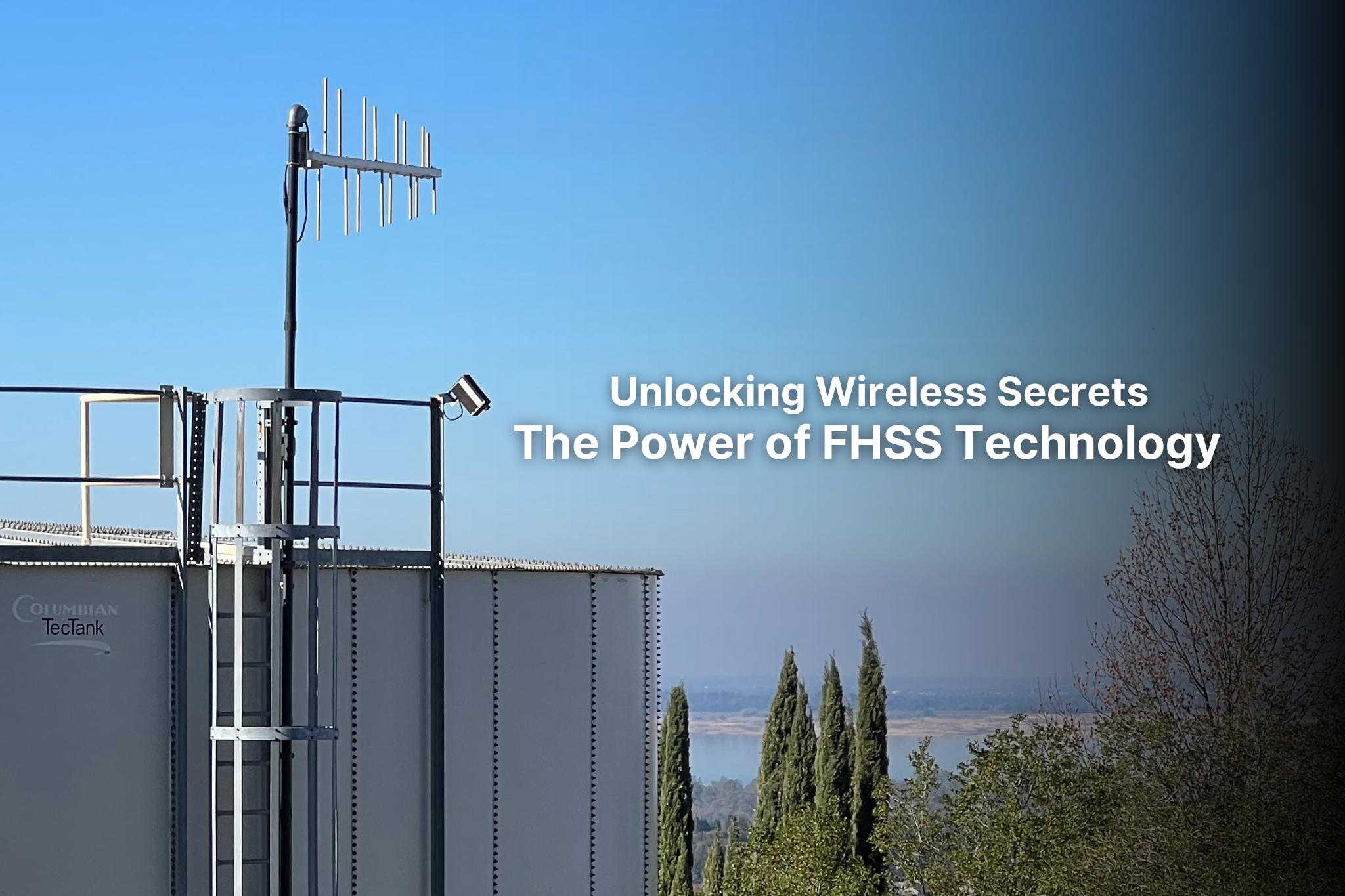
Nowadays, the speed and reliability of communication are essential. Therefore understanding and leveraging advanced technologies like Frequency Hopping Spread Spectrum (FHSS) can be a game changer for industrial network professionals. This technique ensures reliable wireless communication which makes it a crucial asset in the toolkit of modern industrial networking.
In this article, we’ll dive into the details of FHSS, from its foundational principles to its diverse applications in industrial settings. We’ll unravel the layers of this technology and offer insights that could revolutionize your approach to industrial network communication.
What is FHSS?
The Fundamentals of FHSS
Frequency Hopping Spread Spectrum, or FHSS is a method of transmitting radio data by rapidly switching the carrier frequency among many channels (usually hundreds of times per second). The core idea is to spread a narrow signal over a wider spectrum of frequencies, making it less susceptible to interference and communication failures.
The FHSS technique involves a hopping sequence, where the carrier frequency jumps from one to another in a fixed or random pattern, known to both the transmitter and receiver. This synchronization ensures that the sender and receiver are aligned, maintaining a consistent communication link.
How FHSS Operates
Understanding how FHSS operates requires looking into the mechanics of the hopping sequence, carrier frequencies, and data transmission. In FHSS systems, data is sent over a specific carrier frequency for a short duration before hopping to the next frequency in the sequence.
By transitioning between frequency channels, the risk of interference and lost packets is significantly reduced. Additionally, FHSS systems can coexist with other radio signals in the same frequency band, as the likelihood of overlapping frequencies at the same time is low, further enhancing the robust nature of this transmission method. Multiple FHSS networks can coexist with network and radio infrastructure planning.
In summary, here’s how it works:
- The transmitter and receiver both know the hopset, which is a set of frequencies that the transmitter will use to send the signal.
- The transmitter sends a signal on one frequency for a short period of time (usually milliseconds), then quickly switches to the next frequency in the hopset.
- The receiver uses the same hopset and synchronizes with the frequency the transmitter is currently using.
- The transmitter and receiver continue to switch between frequencies in the hopset at a high rate (usually hundreds of times per second).
Benefits of FHSS
FHSS offers multiple advantages in wireless communication, particularly for industrial networks where reliability and security are non-negotiable. One of the standout benefits is its resilience to interference. By constantly changing the carrier frequency, FHSS systems are less prone to signal disruption compared to fixed frequency networks operating in the same band, ensuring dependable communication even in noisy areas.
Moreover, the security offered by FHSS is unparalleled. Since the frequency hopping pattern is only known to the sender and receiver, it becomes exceedingly difficult for unauthorized entities to intercept the data. This inherent security feature is a significant advantage for industries handling sensitive information.
Additionally, FHSS systems are resistant to multipath fading, as the constantly changing transmission frequency reduces the impact of multipath interference and mitigates unfavorable radio paths, especially in non line of sight installations.. The ability to share a frequency band with other transmissions without disruption allows for more flexible and efficient use of the radio spectrum, making FHSS a versatile choice compared to other technologies such as Wi-Fi, narrowband licensed radio, microwave links, and some satellite communication systems. This is especially true in crowded environments like urban networks where cellular tower capacity or Wi-Fi spectrum might become limited due to an emergency or public event with large crowds.
Regulatory Landscape for FHSS
An essential aspect of harnessing the Frequency Hopping Spread Spectrum (FHSS) effectively is understanding its regulatory context, especially in the 900 megahertz frequency range. The 902-928 megahertz frequency range is license-free in the United States, and FHSS radios are commonly used in the band without requiring FCC permission.
However, while the 900 MHz spectrum offers this license-free advantage, it’s still crucial to be aware of FCC regulations. For example, FCC Part 15 rules state that unlicensed radios operating in the 902-928MHz band are limited to 1W output power and 4W EIRP (effective power with antenna gain). If you have any questions or concerns about regulations in this frequency band please contact us and our team will help guide you in the right direction.
FHSS in Industrial Applications
At Elevate Wireless, we focus on selecting and offering products that incorporate FHSS technology to ensure that our clients have access to robust and secure solutions for their industrial networking needs. The 902-928 MHz spectrum is a key frequency band for FHSS and plays a crucial role in providing mission-critical data for Industrial Automation and other critical infrastructure. This band is ideal for industrial settings thanks to its balance of range, speed of communication, and non-line-of-sight capabilities, making it suitable for environments with obstructions, networks with extensive coverage areas, and systems where remote stations are beyond line of sight.
The Xeta9 Series
The Xeta9 series, available through Elevate Wireless, showcases the effectiveness of FHSS technology in industrial settings. These devices operate in the 902-928 MHz range and deliver strong performance with high-speed data transfer, top-notch security, and reliable connectivity. Ideal for various industrial applications, from automated factories to remote infrastructure management, the Xeta9 series stands out for its ability to adapt to different industrial needs.
Our Radio Path Studies
In the implementation of FHSS networks, especially in complex industrial settings, conducting radio path studies is indispensable. These studies are crucial for determining the most effective network layout and ensuring optimal signal quality and coverage. At Elevate Wireless, we emphasize the importance of these studies in planning and deploying FHSS-based networks, and other private wireless systems.
Radio path studies involve detailed analysis of site locations, terrain, and potential obstructions, providing insights that are critical for making informed decisions about asset placement and configuration. This proactive approach not only enhances the reliability and performance of the network but also helps in avoiding costly revisions post-installation. By integrating radio path studies into your network planning process, you can ensure a more predictable, efficient, reliable, and effective deployment of FHSS technology.
Enhance Your Network with Advanced Wireless Solutions from Elevate Wireless
Experience the diverse capabilities of long-distance radio, including Frequency Hopping Spread Spectrum, with Elevate Wireless. Our range of radio solutions is designed to meet the complex demands of industrial networks and ensure exceptional reliability, robust security, and superior adaptability.Ready to transform your industrial network’s communication capabilities? Let’s discuss how our comprehensive range of ISM solutions can fulfill your unique requirements. Start a conversation with our team today and step into the future of industrial wireless communication with Elevate Wireless!
